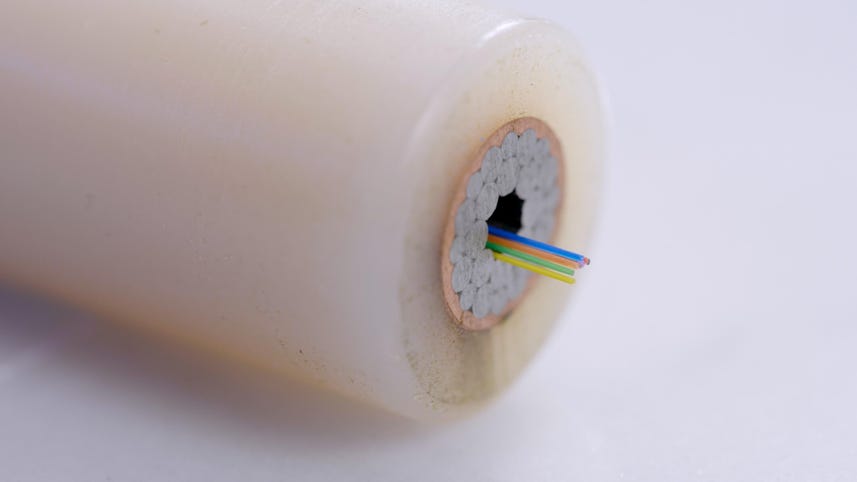
Speaker 1: A network of more than 500 submarine cables stretches across the ocean floor around the world. These are skinny little things about the diameter of a garden hose along most of their length that carry a huge amount of Internet traffic. So 99% of traffic going from one continent to another or to island nations is carried over these undersea cables. They are really fundamental to [00:00:30] Internet. So if you’ve ever watched a YouTube video, if you’ve ever bought a plane ticket, if you’ve ever sent email, there’s a good chance it went through an undersea cable, Speaker 1: just a few wires, very thin, uh, little glass strands right there that go right down the middle of the cable. So this is an actual piece of cable from a US manufacturer called Sub com. That’s how much they’re going through the middle of the ocean now to the ends of the cable, they get a lot [00:01:00] more often. They have great, uh, metal armor. She thing that protects them from anchor throws and fishing tackle. The fastest ones today have a capacity of about 250 terabits per second. That’s about 250,000 times faster than your home. Broadband companies such as Google Meta, Amazon, Microsoft companies that have many data centers that need to be connected or have cloud computing business, have data capacity needs growing by 40%, 50%, sometimes 60% [00:01:30] per year. So I’m desperate for new cable capacity. Interlocutor 1: The way they are installed, uh, it’s a bit complicated. So first you have to manufacture the cable and they put the cable on huge spools and these big drums, they, uh, wind it up and then move it around. They roll it out of the warehouse and onto a large ship. The ship will have three large tanks. You can wrap, uh, thousands of miles of cable in just one of these ships. The ship moves slowly [00:02:00] across the ocean, unreeling the cable as it goes. So closer to shore, the cable is buried with a special plow which digging a small trench as it goes, is dragged behind the ship. It’s actually quite difficult to find a good route for the cables. You want to stay away from other cables. You want to stay away from geological problems where, uh, you know, there might be earthquakes or volcanoes. Speaker 1: You want to stay away from places where there is a lot of fishing. You must stay away from marine protected areas and environmentally sensitive areas. So it’s not easy to wrap the cable where you want [00:02:30] go. They are actually quite easy to break. One of the problems that occurs quite frequently, about every two or three days, somewhere in the world, one of these wires gets cut. Usually the cause is a boat anchor dragging on it or fishing gear tangling in it and breaking. One of the complications at the moment for this construction is a certain geopolitical tension. So you may have heard of the US really hobbling this Chinese networking company called Huawei. While it [00:03:00] it turns out they’re doing the same with a Huawei spinoff, uh, making and installing submarine cables, hmn tech. So the US right now is blocking cables going directly from the US to China. Questioner 1: There is concern that if the Chinese launch some sort of military action against Taiwan, they will cut the dozens of cables connecting Taiwan to the outside world. And you can really disrupt communications. [00:03:30] You can upset a country economically as well. So they are definitely vulnerable. They would be easy enough to cut if you wanted to destroy one. There is a wave of cable construction going on right now. There are 552 active and planned cables. So tech companies, because they need more data and need to be able to transfer data faster, are investing heavily in new cables. So there are several new transatlantic cables, some new transpacific cables being installed right now. And the estimated [00:04:00] one analyst firm’s investment is 10 billion new cables that will be, uh, installed between 2023 and 2025.
#Underwater #Internet #Cables #Light #Bottom #Worlds #Oceans #Video
Image Source : www.cnet.com
